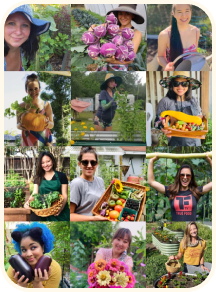Best Bird Feeders
Five bird feeders sure to attract your feathered friends to flock to your yard for a free lunch
If you love to have lots of birds chirping and nesting in your yard, then you’re going to need bird feeders. Your outdoor space is more than just “your” space—it’s also a gathering place for your neighborhood’s feathered friends. Getting your feathered friends to come to your garden and flit about a bit is sometimes easier said than done. With the right feeders, the birds will fly in, and perch, chirp, flit and peck and you can watch them all from your windows or patio.
Note the word “feeders”—not all birds are attracted to the same kind of feeder, and the truth is, you can never have enough kinds of feeders. There are so many varieties, and the more you learn about them, the more likely it is that you’ll want to add new feeders to your yard.
Suet feeders: Are you looking for wrens, bluebirds, starlings, titmice, cardinals, jays, or chickadees? A suet bird feeder will do the trick. This style of feeder has a suet cage attached to a vertical, wooden platform. Woodpeckers will be able to proper their tails against it.
Quick detour: What’s suet, and how do you make it?
Suet is just rendered animal fat mixed with bird-friendly ingredients that are made into little, hard cakes. Any animal fat works, so keep that in mind when you’re cooking and trimming the fat off your meat. When it’s rendered, it means it’s been cooked down to remove any meat or bones so that nothing but the fat is left behind.
You can mix grains, seeds, dried fruits, or dried insects into your suet. You can get all these things at a grocery store, hardware store, or garden center. Suet is extremely healthy for birds and helps them generate body heat in winter.
-
Here’s a quick recipe:
1 cup rendered animal fat - 1 cup peanut butter
- 2 cups cornmeal
- 1 ½ cups flour, any kind
Mix in birdseed, unsalted nuts, dried fruits, dried insects
Melt the rendered fat and peanut butter over the stove. Remove from heat, stir in the rest. You can make it really chunky or less chunky. Freeze the suet for several hours in a mold. Remove it, then share it with the birds in your suet feeder. Just put one or two cakes in at a time, save the rest in the freezer until you’re ready to use. They last for a very long time.
Peanut feeder: These feeders are shaped like a tube that can be filled with shelled or unshelled peanuts. They have large holes so birds and sometimes squirrels can get the peanuts out. Blue jays, nuthatches, tufted titmice and woodpeckers will love peanut feeders. If you love seeing them wrestle the peanuts out of the hole up close, put the feeder near the window, sit back, and watch the show.
Sugar water feeder: These are found in standard, round shapes, with a glass bottle and a tube. Hummingbirds in particular, along with woodpeckers, orioles, catbirds and warblers, will perch on the rim and help themselves to the sugar water. You might find some mockingbirds, grosbeaks, and tanagers who enjoy this sweet nectar as well.
Here’s the sugar water recipe:
- 1 cup hot water
- ¼ cup white table sugar. Don’t use brown sugar, honey, or any artificial sweeteners. Do not add any artificial colorings.
- Mix till this is dissolved and room temperature. Pour it into the feeder dish.
Tube bird feeder: Fill this tube feeder with sunflower, millet, or safflower seeds to attract Northern cardinals, sparrows, chickadees, finches, tufted titmice, house finches, chickadees, and grosbeaks. You’ll need to give the birds the advantage over squirrels and bully birds like grackels, so look for weight-sensitive tube feeders that close off seed access. Because tube feeders are hollow, they keep the seeds clean and dry. The size of the perches on the feeding ports will depend on the size of the birds you’re hoping to attract.
A few more tips:
- Bird seed is a great way to bring the birds around, but even the birds like it when the menu is a bit more varied. To really bring the birds to your yard, try a mixture of seeds, sugar water, suet, worms, peanut butter, and maybe sometimes some fresh oranges. All of these are enticing to a variety of birds, and you’ll have the enjoyment of watching them all. Try this: Spread peanut butter on a toilet paper roll, then roll that in bird seed. Put it in the feeder and watch the birds go for it.
- Don’t forget, many species of birds are natural ground feeders. Don’t forget that you can sometimes just sprinkle the seeds right on the ground. Just be careful if you have pets or young children around; some bird delicacies are choking hazards to children.
- Place the bird feeder quite a distance (perhaps 6-7 feet) from a bird house and a bird bath. This helps keep the birds safer.
- Keep the bird feeders clean to keep ants, squirrels and other pests away.
If you’re a bird lover, you want your back yard to be a place birds can come and visit, rest, or even nest. You’re also doing a good turn for the environment. Studies show that birds in areas with bird feeders are in overall better health than birds in places without them, so just feeding the birds makes all the difference in their future.




















